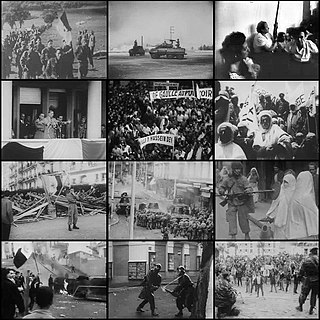
The Algerian War was a major armed conflict between France and the Algerian National Liberation Front (FLN) from 1954 to 1962, which led to Algeria winning its independence from France. An important decolonization war, it was a complex conflict characterized by guerrilla warfare and war crimes. The conflict also became a civil war between the different communities and within the communities. The war took place mainly on the territory of Algeria, with repercussions in metropolitan France.
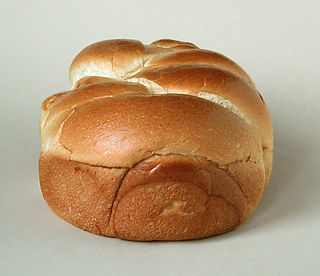
Brioche is a pastry of French origin whose high egg and butter content gives it a rich and tender crumb. The chef Joël Robuchon described it as "light and slightly puffy, more or less fine, according to the proportion of butter and eggs". It has a dark, golden, and flaky crust, frequently accentuated by an egg wash applied after proofing.
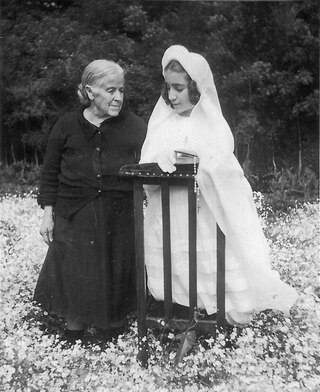
The Pieds-Noirs are an ethno-cultural group of people of French and other European descent who were born in Algeria during the period of French rule from 1830 to 1962. Many of them departed for mainland France during and after the war by which Algeria gained its independence in 1962.

The national flag of Algeria consists of two equal vertical bars, green and white, charged in the center with a red star and crescent, a symbol of Islam as the nation's prominent faith. The flag was adopted on 3 July 1962. A similar version was used by the Algerian government in exile from 1958 to 1962. The Western blazon is per pale vert and argent; a crescent and star gules.

Cozonac or Kozunak is a sweet yeast dough that can be used to make different traditional holiday breads and cakes. Often mixed with raisins, it can be baked as a loaf or rolled out with fillings like poppy seed or walnuts. It is common throughout Southeastern Europe in countries such as Romania, Moldova, Bulgaria, Serbia, North Macedonia and Greece. Rich in eggs, milk and butter, it is usually prepared for Easter in Romania, Serbia, Bulgaria, and in Romania and Moldova it is also traditional for Good Friday, in a simplified version with vegan ingredients, without eggs or milk - named Cozonac de post - to be eaten by Christians during lent. The name comes from the Bulgarian word for hair-коса/kosa, or Greek: κοσωνάκι, romanized: kosōnáki, a diminutive form of κοσώνα, kosṓna.

The Algeria national rugby union team represents the Algerian Rugby Federation (FAR) in men's international rugby union. The first match they competed in was on 24 February 2007, in a game in Tunis against the Tunisia national rugby union team. While almost all current national team players play for clubs in the French championship, there are some national players who practice the sport in Australia, New Zealand, Romania and England. The first coach of the Algeria national rugby union team was Morad Kellal.
The Battle of Philippeville, also known as the Philippeville massacre or the August Offensive was a series of raids launched on 20 August 1955 on various cities and towns of the Constantine region by FLN insurgents and armed mobs during the Algerian War between France and Algerian rebels. The raids, which mostly took the form of ethnic riots, resulted in the massacre of several dozens of European settlers known as Pieds-Noirs. These massacres were then followed by reprisals by the French army and Pieds-Noirs vigilantes, which resulted in the death of several thousand Muslim Algerians. The events of late August 1955 in the Constantinois region are considered to be a major turning point of the Algerian War.

The cuisine of Algeria is influenced by Algeria's interactions and exchanges with other cultures and nations over the centuries. It is based on both land and sea products. Conquests or demographic movement towards the Algerian territory were two of the main factors of exchanges between the different peoples and cultures. The Algerian cuisine is a mix of Arab, Berber, Turkish and French roots.

Chakhchoukha or chekhechoukha is a traditional Algerian dish made from torn or rolled pieces of cooked semolina dough that are served in a flavorful tomato-based sauce. The dish consists of small pieces of rougag mixed with marqa, a tomato stew. The dish is typically made by boiling the semolina dough in salted water until it is cooked and then rolling it into small balls or tearing it into bite-sized pieces.
Sidi Ghiles is a town on Algeria's Mediterranean coast. The municipality of Novi is located about 32 kilometres (20 mi) west of Tipasa and 7 kilometres (4.3 mi) southwest of Cherchell. This agricultural locality is 100 kilometres (62 mi) from Algiers.

The Battle of Bab el Oued was a violent confrontation which occurred during the latter stages of the Algerian War (1954–1962) between the French Army and the Organisation armée secrète (OAS) which opposed Algerian independence. It took place in Bab El Oued, then a working-class European quarter of Algiers, from 23 March to 6 April 1962.

Baghrir or beghrir (Arabic:البغرير), also known as ghrayef or mchahda, is a pancake consumed in Algeria, Morocco and Tunisia. They are small, spongy, and made with semolina or flour; when cooked correctly, they are riddled with tiny holes. The most common way to eat baghrir in Algeria and Morocco is by dipping them in a honey-butter mixture, but they can also be cut into wedges and served with jam. Baghrir is popular for breakfast, as a snack, and for iftar during Ramadan. On the 9th day of Ramadan, the Mozabite people of Algeria exchange baghrir as a form of tradition, which they call m'layin; they are also distributed to the poor.
Jules Abadie was a French politician and surgeon in Oran, French Algeria, acting as a member of the Comité Français de Libération Nationale (CFLN).

Michèle Perret is a French linguist and novelist who was born in 1937 in Oran in Algeria.

Soldiers of the Algerian Opposition was a French-based Algerian paramilitary organization active during the 1970s.
Mustapha Bouchelaghem, also known as Bey Bouchelaghem was the Bey of the Western Beylik from 1686 to 1734/37.
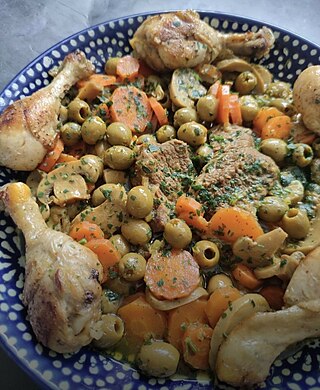
Tajine Zitoun or Tajine El Zitoune or Tagine Zitoune or Olive Tajine is a traditional Algerian stew from the city of Algiers. It is named after the earthenware pot in which it is cooked, a tajine pot. Tajine zitoun typically includes lamb, turkey or chicken and olives as the main ingredient, often also with some combination of onions, carrots, mushrooms or other vegetables, and is often seasoned with thyme, bay leaves, lemon juice, and saffron or turmeric. In Constantine, Algeria, the savory dish could be chicken or beef tongue simmered with only olives and mushrooms, or meatballs broken down, then cooked in sauce with mushrooms and olives.

Tajine mtewem, usually abbreviated to mtewem is a traditional Algerian dish, and more specifically Algerine. It is made from minced meatballs, pieces of chicken or lamb meat, garlic, chickpeas and almonds. Its sauce is prepared with a grated onion and a lot of garlic and is usually cooked in a tajine pot. Like most Algerian dishes, it is usually served with either a white or red spicy sauce.

Hmiss or ifelfel, meaning "chilli pepper" in Kabylia, or felfla and chlita in the region of Oran, is a traditional Algerian salad made from grilled peppers and tomatoes, chopped, mixed and seasoned with olive oil. The word "hmiss" means sauté in Algerian derja, because the vegetables have to be sautéd after grilling.
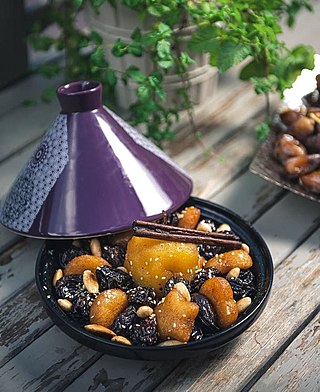
Lham hlou. also known as lham lahlou and tajine lahlou. which means "sweet meat" or "sweet tajne", is an Algerian sweet dish made with meat and mainly prunes, possibly with apricots and decorated with raisins and almonds in a syrup of sugar and orange blossom water. Apples are usually used as well. The meat and vegetables are first sauteed with onions and smen. This dish is served as a starter or as a dessert during Ramadan and on the occasion of wedding celebrations.















